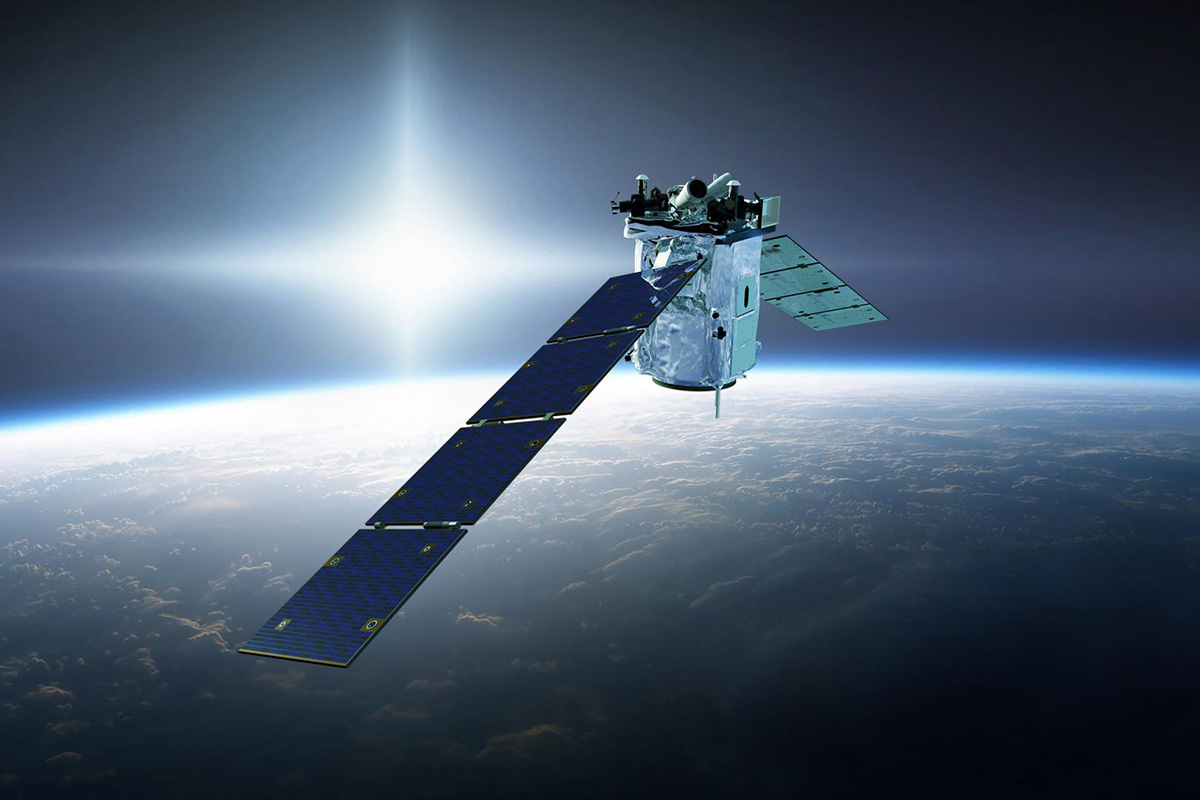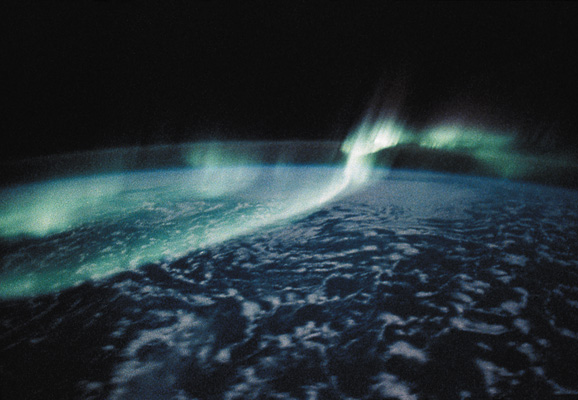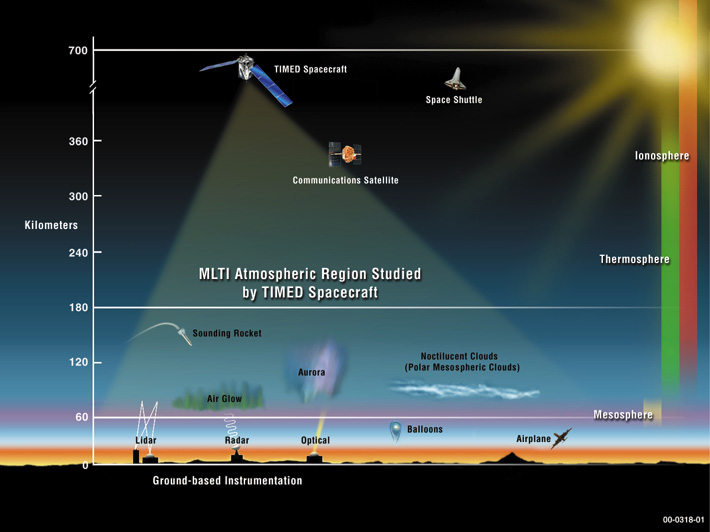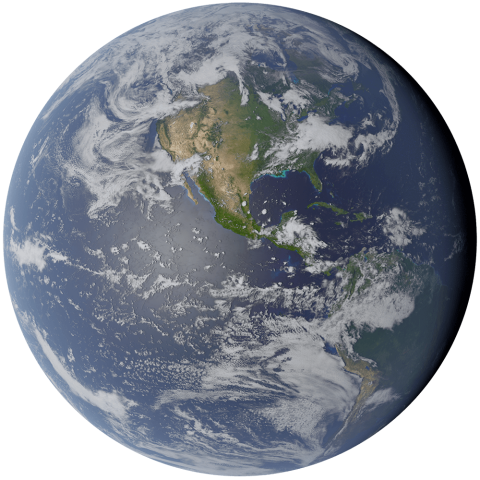Our Contribution
Studying the Gateway Between Earth and Space
For nearly two decades, the NASA TIMED (Thermosphere, Ionosphere, Mesosphere Energetics and Dynamics) mission has provided valuable insight into the influences of the Sun and humanity on the least-explored and least-understood region of Earth’s atmosphere—the mesosphere and lower thermosphere/ionosphere. Located approximately 40-110 miles (60-180 kilometers) above Earth, this region is the gateway between Earth’s atmosphere and space, where the Sun’s energy is first deposited into Earth’s atmosphere and where auroras are generated. TIMED probes this critical region to advance our knowledge of the dynamic interplay between the Earth’s upper atmosphere, the near-Earth space environment, and the Sun.
TIMED remains healthy and is proposed to continue operating though 2025.








